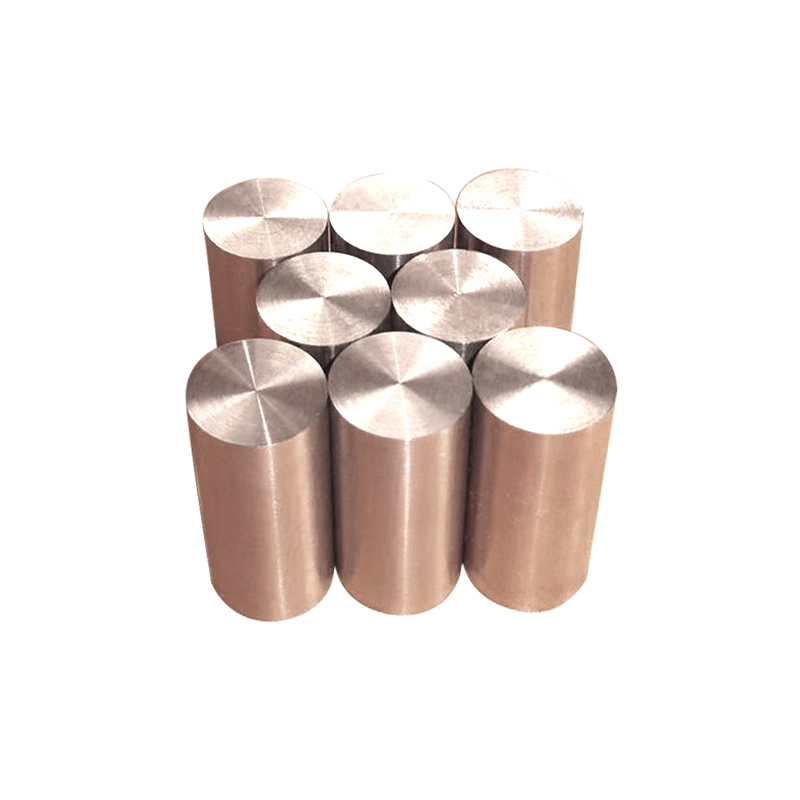Among many functional metal materials, copper tungsten alloy is a special alloy with high strength, high thermal conductivity and high wear resistance. It is widely used in aerospace, power electronics, high-end molds and military fields. It combines the excellent conductivity of copper with the high melting point and high hardness of tungsten to form a composite material with balanced performance and strong stability, which can be called the "golden partner in the material world".
Copper tungsten alloy is a metal composite material with tungsten as the main component and copper as the secondary component, and the typical tungsten content is between 70% and 90%. Tungsten has a high melting point (3422°C), high density and excellent high-temperature stability, while copper is known for its excellent electrical and thermal conductivity. The two metals are physically insoluble in each other, so copper tungsten alloy is usually made by powder metallurgy, that is, tungsten powder is pressed into shape and sintered, and then infiltrated with high-temperature molten copper liquid to make copper evenly distributed in the pores of tungsten.
High temperature strength and corrosion resistance
The high melting point of tungsten gives copper-tungsten alloy extremely strong high temperature bearing capacity, and it can still maintain strength and hardness under high heat load conditions.
Excellent electrical and thermal conductivity
Although tungsten itself has poor electrical conductivity, the addition of copper effectively improves the electrical and thermal conductivity efficiency of the entire alloy, and is suitable for occasions with high electrical conductivity requirements such as electrodes and electrical contacts.
Low thermal expansion coefficient
Compared with pure copper or aluminum, copper-tungsten alloy has a low thermal expansion coefficient, which is suitable for manufacturing high-precision electronic packaging materials and structural parts, and is not easy to deform at high temperatures.
Corrosion resistance and wear resistance
The alloy has good chemical stability, arc erosion resistance, strong corrosion resistance, and is still reliable and durable in harsh environments.

Electrode material
In electrospark machining (EDM), electrodes made of copper-tungsten alloy are widely used in precision machining of high-strength materials such as hard metals and mold steels due to their wear resistance and stable discharge performance.
High-voltage electrical contacts
Used in power equipment such as circuit breakers, relays, and contactors, it can withstand strong arc impacts and ensure long-term reliable switching.
Aerospace and military industry
Manufacturing rocket nozzles, missile flight control components, thermal protection components of high-speed aircraft, etc., because it can withstand extreme high temperatures and impact loads.
Thermal management and electronic packaging
In high-power semiconductors, lasers, and microwave devices, copper-tungsten alloys are used as heat dissipation substrates to help electronic equipment operate stably.
Radiation protection materials
Using its high density characteristics, copper-tungsten alloys can also be used as protective components in radiation scenarios such as X-rays and gamma rays.
With the continuous expansion of electronic technology, aerospace manufacturing, and clean energy, copper-tungsten alloys are moving towards higher performance, more precise processes, and more environmentally friendly manufacturing. For example, the combination of nano-scale tungsten powder and copper powder can bring more uniform organizational structure and better mechanical properties.
Green manufacturing processes and recycling and reuse technologies are also gradually being applied to the production process of copper-tungsten alloys, pushing them towards sustainable materials.
Copper-tungsten alloy is a high-performance material that combines conductivity, high temperature resistance, corrosion resistance, and high density, showing stable performance under various extreme conditions. It is not only an important part of the field of materials engineering, but also represents the future development direction of high-end manufacturing and functional composite materials. With the continuous advancement of science and technology, copper-tungsten alloy will shine brightly in more emerging fields.












